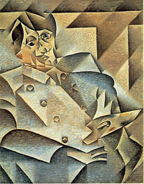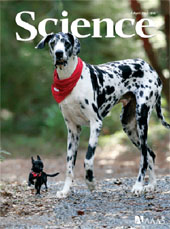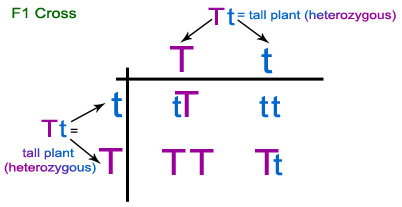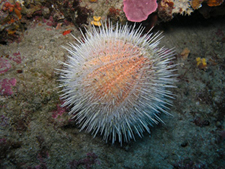Indeas in Science
Creativity in Science: How scientists decide what to study
Did you know?
Did you know that creative thinking is found in every field, from art to business and even to science? Creativity plays a critical role in the process of science. The really big problems are usually too difficult to solve directly, but creative thinking allows scientists to re-imagine these complex problems and break them down into smaller, solvable parts.
Students in science classes usually get the idea that scientific investigations involve careful observation and analysis of data to test hypotheses. One thing that remains shrouded in mystery, however, is how scientists decide on the particular questions they ask in the first place. For example, if you were to ask college biology students what they want to research or what motivates them to study science, they might say, "I want to find a cure for cancer." But if you were to ask which experiments or observations they plan to start with, most students would be at a loss. In contrast, if you were to flip through the table of contents of the journal, Cancer Research, you would find titles like "Ligand-Independent Androgen Receptor Variants Derived from Splicing of Cryptic Exons Signify Hormone-Refractory Prostate Cancer" (Hu et al., 2009). Clearly, the actual research topics scientists choose to study and publish papers about are quite a bit more specific than curing cancer.
So how do scientists come up with those specific questions to study? You might be surprised to hear that the process involves large doses of creativity. A Nobel Prize-winning biologist, Peter Medawar, once referred to scientific research as "the art of the soluble" (Medawar, 1984, p. 254). Medawar did not mean that science is about things that dissolve – he meant that being successful in science is about figuring out which questions are solvable through scientific investigation, and then figuring out the solutions to those questions.
The natural world is highly complex, and the really big, interesting scientific problems (like curing cancer) are usually too difficult to solve directly. The art of being a scientist involves continually re-imagining these big problems, mentally breaking them down into smaller, solvable (i.e. "soluble") parts, and then speculating about which of these smaller parts might be key to cracking open the whole subject. In other words, a scientist must imagine, in advance, possible outcomes of different observations, and then design a research study that might help them decide between different hypotheses.
What is creativity?
You might think that this process sounds more analytical than creative, but experts who study creativity have found that logical thinking is always a part of the creative process in any field, from art to science to business (Tardif & Sternberg, 1988). Creativity is not only the ability to come up with new ideas, but also narrowing down those new ideas to focus on one that can be elaborated. Creative people in any field come up with new ways of looking at the world – they are constantly asking, "What if...?" But it doesn't stop there. After a creative person asks "What if...?" they then go on to logically think through the consequences.

Take, for instance, the Cubist style of painting developed by Pablo Picasso and Georges Braque. Both artists were adept at painting in a realistic style, but they decided to tweak the rules a bit. "What if," they asked, we were to represent complex objects like people as composites of simple geometric shapes like cubes, pyramids, and spheres? And further, "what if" we were to flatten these three-dimensional shapes onto a single plane, as if the object were simultaneously visible from all angles? What would it look like? Picasso, Braque, and other artists painted subjects, like people, in a Cubist style by logically using the new rules (see Figure 1). One of the reasons that Picasso is considered a great creative artist is because he came up with a new idea and then elaborated upon it: His paintings stuck to the rules of Cubism he helped to invent.
Science is creative in much the same way that art, music, or literature are creative, in that scientists have to use their imagination to come up with explanations. These explanations are well informed – they are not mere guesses – but there is no escaping the fact that they are ultimately products of the imagination. As Peter Medawar explained, "Scientists are building explanatory structures, telling stories which are scrupulously tested to see if they are stories about real life" (Medawar, 1984, p. 133, emphasis in original). By "telling stories," Medawar does not mean that scientists are just making things up out of nothing. He means that scientists piece together bits of information in a way that makes sense, the way writers piece together characters and events. But a scientist's job doesn't end there. The story they've told is rigorously tested to see if makes sense in the context of everything else we already know.
It can be difficult to understand how scientific creativity works in practice, so in this module we will briefly explore the creative process from the history of one of the big problems in biology: heredity. That is, how do organisms inherit the traits of their parents? Many of the scientific concepts mentioned here are examined in more detail in other modules, but here we focus on how creativity helped develop our understanding of this big problem.
Comprehension Checkpoint
Logical thinking is __ part of the creative thinking.
Breaking down the big problem

For thousands of years, people have understood that organisms inherit traits from their parents and have bred animals (like dogs, horses, sheep, and cattle) for specific traits. If we want dogs that are easy to train as hunting companions, or have black spots, long noses, or whatever else, we breed dogs that have those traits, knowing their offspring will be more likely to turn out similarly. After several generations of such breeding practices, we can generally produce animals that have very consistent traits – that's why there are so many very distinct kinds of dogs around (Figure 2).
It has always been clear, however, that patterns of inheritance are complicated. We've all seen some children who look very much like one parent, while others look like a mixture of the two. Still others might look like one of their grandparents or uncles and aunts.
So how does heredity work? Today, most people are familiar with the ideas of genes and DNA, and that we inherit genes from our parents that encode all kinds of traits like skin color and some diseases. But imagine what it was like for 19th century scientists who didn't know anything about genes or chromosomes or DNA to try and answer this question. It was just too big to tackle all at once, so scientists began using their imagination to break up the problem into more specific questions. There are many smaller and more specific questions that one could ask about how heredity works, such as:
- "How do traits (like hair color) sometimes skip generations?"
- "Why do some offspring look very different from their parents?"
- "Does the inheritance of one type of trait affect how others are inherited?"
Scientists also have to imagine how to investigate such questions using different research methods (see our modules on Research Methods). Given the research techniques and knowledge that was available in the mid-1800s, one question that could be addressed was simply, "What patterns can we observe in inherited traits?" If inheritance occurs in certain distinct patterns, those patterns might help narrow down the possibilities for the processes involved in making those patterns, the same way you can use the size and shape of tracks in the mud to determine who or what was walking through the area.
Comprehension Checkpoint
Creative scientists are able to
Observing patterns in peas
Gregor Mendel, an Austrian monk, looked systematically at patterns of inheritance. Mendel had been trained in physics and mathematics at Vienna University, but he had a passion for biology, and was inspired by a biology teacher at the university to try to "reduce the phenomena of life to known physical and chemical laws" (Schwartz, 2008) (see our Scientists and the Scientific Community module for more information on people who influenced Gregor Mendel's scientific career). Mendel started performing secret crossbreeding experiments on white and gray mice – a practice not fully endorsed by the church at the time – as well as more public experiments with various flowering plants at his monastery.
By 1854, Mendel had settled on the common garden pea, Pisum, for his experiments. Why peas, and not mice? Primarily, peas were simply easier to breed. Mendel was also able to produce varieties of Pisum that bred true for certain easily recognizable characteristics. For example, some varieties produced only yellow seeds, while others produced only green; some produced red flowers, and others white, and so on. If he crossed plants that produced yellow seeds with plants that produced green seeds, he could confidently predict that all the offspring of this cross would produce yellow seeds. And if he crossed the offspring, which all had yellow seeds, about ¾ of the next generation would produce yellow seeds, while ¼ would produce green seeds. Thus, the offspring still retained a characteristic from the parent with green seeds even though they themselves did not produce green seeds. Mendel thus proposed a simple model, in which two characteristics, one from each parent, are inherited and involved with determining traits (Figure 3) (see Genetics I for more on Mendel's laws).

Even though Mendel clearly showed that his model applied to seven traits of garden peas, other traits do not exhibit such simple behavior. In fact, he later performed similar experiments on other plants and did not always get the same results – heredity is just not that simple. Still, enough traits of various organisms were shown to follow the patterns recognized by Mendel that eventually scientists came to believe he had identified something important about heredity, even if there were other complicating factors (Schwartz, 2008).
The story of Mendel's peas illustrates two important points about creativity in science. First, creativity involves abstraction. That is, even though the real world is very complicated, a creative person can mentally carve away some of the complexity to reveal simple principles that mostly account for his or her observations. Mendel's laws aren't perfect, but he is considered a great scientist because he was able to identify important patterns in his data that other people might have missed by getting too hung up on the details. Second, creative scientists can often see through the complicating factors to see the essence of a problem, allowing them to pick the simplest cases to study first. This is not a sign of laziness. Instead, the idea is that by studying the simplest cases, scientists can build simple models and add the complexity to them later. This is exactly why Mendel chose Pisum for his study, and it is exactly why he was able to identify such an important pattern in his data.
Comprehension Checkpoint
An important aspect in creativity in science is the ability to
The next question
Mendel's simple model of heredity was not immediately accepted. In fact, his work does not seem to have been widely known for some time. But the patterns of inheritance he identified were crucial in the quest to answer another question: What is the physical material that passes heritable traits from organisms to their offspring? Identifying the material that carries hereditary information would allow scientists to study that material in more detail and perhaps understand exactly how traits are passed on.
Again, scientists began with simple cases – single cells. By 1841, the microscopist Robert Remak had collected evidence that new cells are formed by the division of previously existing cells (Remak, 1841). During the process of cell division, the nucleus appears to dissolve into the protoplasm of the original, and then two nuclei reappear, one in each of the two cells produced. In 1874, Leopold Auerbach, a German physician at the University of Breslau, showed that the nuclei of two cells appear to fuse when an egg cell is fertilized, and then cell division begins (Auerbach, 1874). When Oscar Hertwig, a German zoologist, read Auerbach's paper, he realized that the second nucleus might belong to a sperm cell. Therefore, an exchange of genetic material from both parents might occur when the nuclei of sperm and egg cells fuse together.

When this idea hit Hertwig, he immediately dropped all his other projects and began studying egg cell fertilization in sea urchins (Figure 4). Why sea urchins? As a zoologist, Hertwig knew about a lot of organisms, and he chose sea urchins for a very practical reason: Their egg cells are large and translucent, so it would be relatively easy to see what goes on inside a sea urchin egg under the microscope. Hertwig's and later studies showed that during cell division, the nucleus dissolves into strings called "chromosomes," which then split apart along their lengths and segregate during cell division. It was soon recognized that if chromosomes carry the hereditary information in cells, Mendel's model might provide a mathematical description of their behavior during reproduction (Schwartz, 2008). (For a more complete description of chromosomes, see our DNA I module.)
You might be asking where these flashes of creative insight come from that send scientists like Oscar Hertwig rushing off to study odd things like sea urchin eggs. It would be easy to take a romantic view of this kind of creativity, and vaguely explain it as a product of Hertwig's or Mendel's "genius." But creativity about what to study is only possible when a scientist possesses a considerable stock of background knowledge to draw from, a concept discussed further in our module on Scientists and the Scientific Community.
Comprehension Checkpoint
When it comes to what scientists study, creativity requires
Getting back to the big problem
Once scientists had concluded that chromosomes carry genetic information, they were able to study them more closely. Chemists in the early 20th century found that chromosomes are made of proteins and a substance called deoxyribonucleic acid, abbreviated as DNA. Subsequent experiments showed that DNA, rather than protein, must carry the genetic code (Schwartz, 2008). However, it still was unknown how heredity works. It was still not quite possible to address this big problem directly. Instead, scientists began asking more specific, but related questions.
A big break in the case came with the question asked by a few scientists, "What is the molecular structure of DNA?" When chemists speak of "molecular structure," they are talking about how atoms are bonded together in particular configurations. They often visualize the atoms as little balls and the bonds as sticks connecting the balls together.
How could scientists possibly know how things as small as atoms fit together? It turns out that if you crystallize a substance, you can shoot X-rays at the crystals, which diffract the radiation into different patterns depending on the arrangement of atoms. During 1951-1952, Rosalind Franklin, a chemist at King's College, London, obtained what were then the highest quality X-ray diffraction patterns of crystallized DNA ever produced. Using these and other data, she was able to quickly figure out important aspects of the molecular structure (Elkins, 2003).
In 1953, James Watson and Francis Crick, two of Franklin's colleagues at King's College, expanded on Franklin's data and insights to build a more complete model of DNA structure out of actual balls and sticks. They put the pieces together in different ways until they had a structure that accounted for all the information they had about DNA, and it looked like the now-familiar double helix. Their ball-and-stick model helped them explain a previous observation by Erwin Chargaff that in DNA the amount of adenine always equals the amount of thymine, and the amount of cytosine always equals that of guanine (Watson & Crick, 1953) (see our DNA II module for more information).
Once the structure of DNA was known, understanding how material was passed on during cell division became more accessible. Watson and Crick said, "It has not escaped our notice that the specific pairing we have postulated immediately suggests a possible copying mechanism for the genetic material" (Watson & Crick, 1953). In other words, they recognized that the structure could "unzip" into separate strands that each contained the full genetic code in order to replicate, an observation made by the scientists studying chromosomes. The discovery of the structure of DNA allowed scientists to then go on to map out which parts of individual DNA molecules regulate different functions and traits. Scientists involved in the Human Genome Project, for example, worked from 1990-2003 to catalog the sequences of over three billion base pairs that make up human DNA. Scientists have continually been working with these data to identify how different DNA segments relate to various human traits.
Developing your own scientific creativity
We now know basically how heredity works, even though we are still working on understanding the complicating factors – such as environment – that can alter the simple patterns seen by Mendel. This knowledge was gained because scientists were able to break down a very big question into more manageable parts and take advantage of their background knowledge to think creatively about the answers to those questions.
Developing your own creativity as a scientist starts with getting to know a subject in many ways – reading the literature, becoming familiar with materials, and, most importantly, talking to people who are experts. Because they are experts, they know the unanswered questions that remain, and they have a good sense for the techniques that can address those questions. It might seem like a paradox that you have to be knowledgeable in order to be creative, but new knowledge can be generated only if you know what has come before. If you want to find a cure for cancer, for example, you might study "ligand-independent androgen receptor variants derived from splicing of cryptic exons" like Hu and others (2009) because they are molecules that might signal the presence of a certain type of prostate cancer, and that might give you clues about how prostate cancer develops. They would never have come up with such a research topic without a good deal of background knowledge gained from reading scientific literature.
Fostering scientific creativity also involves challenging that knowledge by asking "what if" questions, proposing alternative solutions, and looking across disciplinary boundaries to answer your questions. What if prostate cancer were caused by something you ate? How would we test for that? What other concepts might be important to answering that question? The "art of the soluble" involves choosing which "what if" questions can really be addressed, and creatively figuring out ways to answer them.
Summary
Success in science requires a creative mind. The module explore the nature of creativity in the scientific process. It details various discoveries and explains how creativity plays a significant role in each. The importance of logical thinking and background knowledge to the creative process is discussed.
Key Concepts
- Some of the most important questions in science are either too large or too complex to answer directly, scientists break them down into smaller, solvable questions.
- Many times, the questions that scientists research involve the simplest cases.
- Scientists use creativity to determine which smaller questions are likely yield results, imagine possible answers to their questions, and devise ways to test those answers.
- To be creative, scientists need background knowledge, which they gain by learning about past scientific work, talking to colleagues, and tapping their own experience.
QUIZ
- The creative process used in art is fundamentally different from the process of science
- Science has been descibed as "the art of the soluable." This means that science is about
- The ability to be creative in any field is enhanced by
- In order to make progress in the study of genetics, scientists tended to choose an organism to research that was
- Scientists are often concerned with the "big questions" in their field, such as Can we mitigate the effects of climate change? or What causes heart disease? or How important is a particular species to our ecosystem? Which of the following statements best represents how scientists tackle these big questions?
- Being a scientist often involves distinguishing between testable and non-testable questions. Based on what you've read here, which of the following do you think is a good definition of a "testable question"?
- Scientists "tell stories" in the sense that they
(A)__chemistry and chemical solutions.
(B)__solving the world's problems.
(C)__determining which questions are solvable.
(D)__descibing research artistically.
(B)__background knowledge and experience.
(D)__interacting with other people.
(A)__simple, and could provide the most straightforward case.
(B)__complicated, and could provide a realistic example.
(C)__well-known, and the significance would be appreciated.
(D)__obscure, and therefore non-controversial.
(A)__Scientists design research studies that directly address the big questions.
(B)__Scientists design studies that address a portion of the big question that can be addressed.
(C)__Scientists hope that the work they do addresses a big question.
(D)__Scientists ignore the big questions, knowing they are too challenging to answer.
(A)__A testable question can be answered definitively through experimentation.
(B)__A testable question is a large, overarching question of importance to many scientists.
(D)__A testable question is preferred by scientists because it has a simple answer or explanation.
(A)__interpret their data however they want.
(B)__piece together information to make a coherent explanation.
(C)__write scientific papers that simplify the process they went through.
(D)__try to extrapolate from very simple cases to more complicated ones.